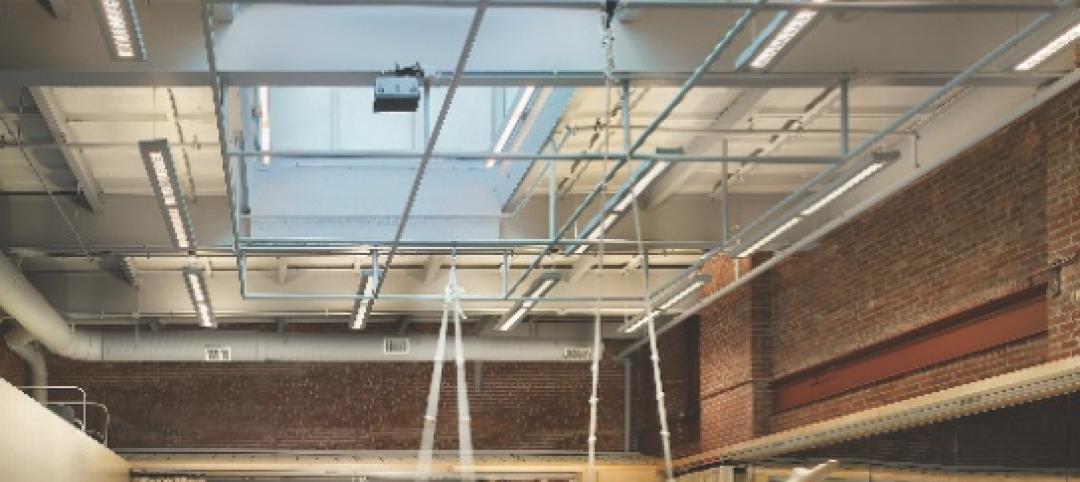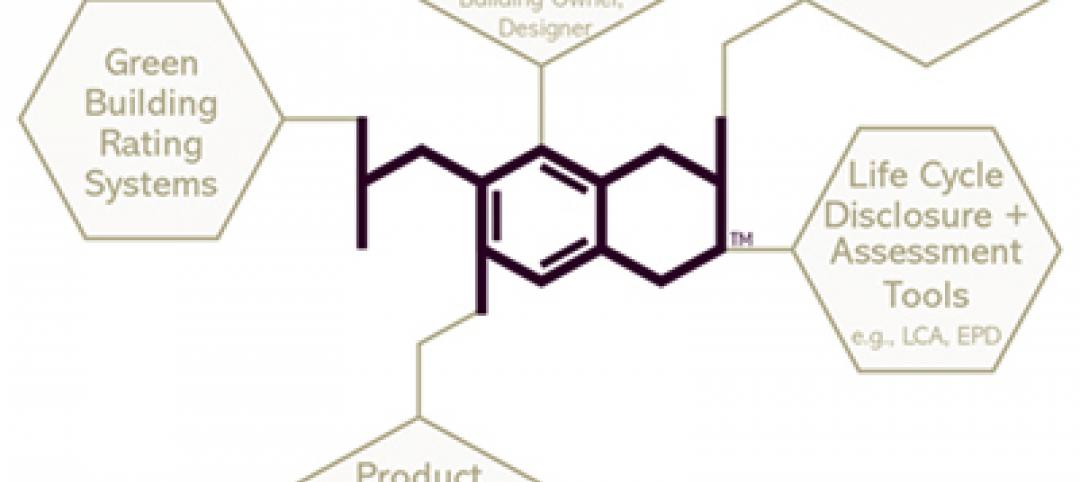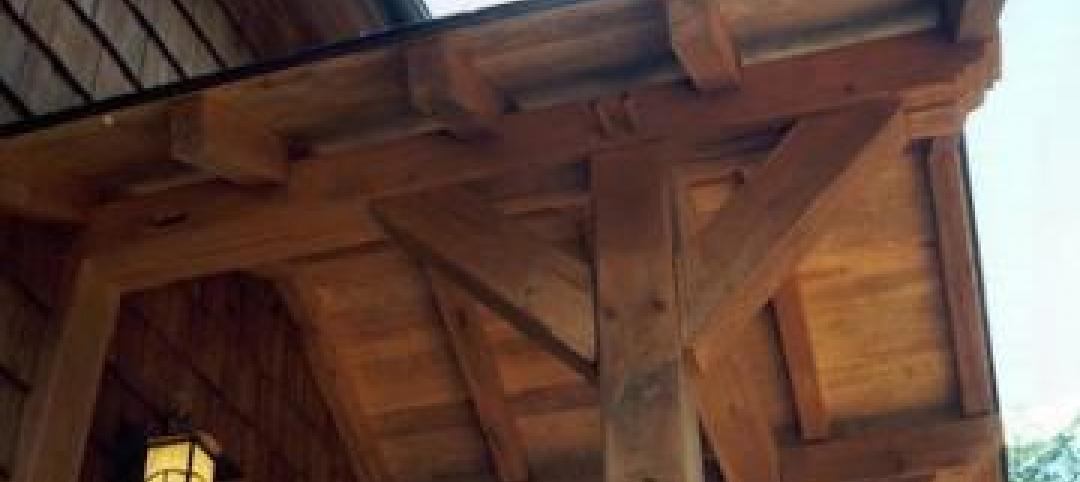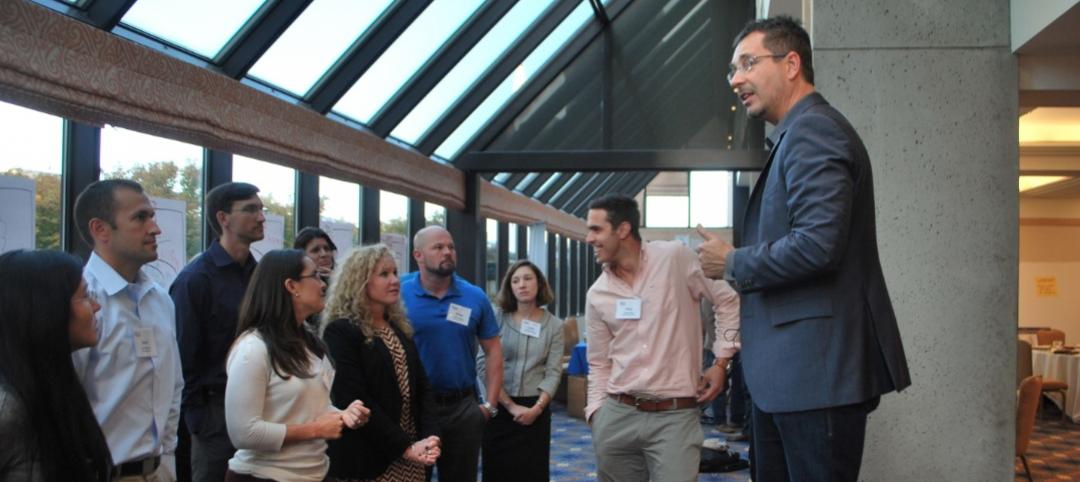 |
| Photos: Robert Canfield Photography |
“Ohlone College Newark Campus Is the Greenest College in the World!”
That bold statement was the official tagline of the festivities surrounding the August 2008 grand opening of Ohlone College's LEED Platinum Newark (Calif.) Center for Health Sciences and Technology.
The 130,000-sf, $58 million community college facility stacks up against some of the greenest college buildings in the world, with near-off-the-grid renewable energy performance and advanced stormwater management techniques. But the most intriguing fact about Ohlone's new über-green facility is that it wasn't even planned as a green building, let alone one that could achieve the USGBC's highest rating.
 |
| Two enthalpy wheels, each 16 feet in diameter, recover up to 95% of the energy from the building’s exhaust air, reducing energy use. Large circular windows provide close-up views of the wheels (below), which are situated on either side of the main lobby (top). |
 |
The original 2003 master plan by the San Francisco office of Perkins+Will envisioned a typical all-in-one community college building to replace rented classroom facilities. The facility was designed to house classroom and laboratory spaces for the college's biotechnology, health sciences, emerging technology, and environmental studies programs.
LEED certification was not a goal, noted Perkins+Will's Karen Cribbins-Kulkin, a design architect on the project. “We were keeping score ourselves, but we didn't share our point tallies with the client,” said Cribbins-Kulkin. “We called it 'sustainability by stealth.'”
Not until six months later did the Newark Center project turn a much deeper shade of green. That's when Douglas Treadway, PhD, entered the scene as Ohlone's new president and district superintendent.
 |
| The building’s horizontal ground-coil geothermal system is composed of 26 miles of pipe buried about eight feet below ground. The system minimizes the amount of energy required for heating and cooling the interior spaces by taking advantage of the stable ground temperature (about 61°F) to temper the incoming air. |
“Dr. Treadway looked at the existing master plan and decided to put the project on hold for a year so we could evaluate our direction and determine if the plan represented the very best for our students, our community, and the environment,” recalled Patrice Birkedahl, Ohlone's development director.
Treadway's vision for Ohlone's Newark campus (the school's main campus is located in Fremont, Calif., near the southeast shore of San Francisco Bay) focused on setting the benchmark for community colleges in sustainable design, particularly on energy efficiency and using the environment as a teaching tool. That led the project's Building Team—which included MEP engineer Alfa Tech Consulting Engineers, general contractor Turner Construction, and architect Perkins+Will—to collaborate on a design that would take the building more than 80% off the grid and utilize the 81-acre brownfield site and adjacent estuary and federally protected wetlands as teaching tools.
Using a computer-generated model of the building, complete with a site-specific weather profile simulator and life cycle cost calculations, Alfa Tech evaluated dozens of energy conservation and on-site energy generation techniques. In the end, two common approaches—geothermal and photovoltaics—and one not-so-common technique—enthalpy heat-recovery wheels—proved to be the perfect combination for maximizing energy efficiency on the project.
 |
| During the summer months, the Newark Center’s 713 MWh, 38,000-sf photovoltaic array provides 100% of the building’s power needs. |
To reduce the energy use in the classrooms and labs (which require large amounts of fresh air to comply with codes for occupancy and lab air exchange rates), the team specified two enthalpy wheels, each 16 feet in diameter, which can recover up to 95% of the energy from the exhaust air. The wheels also provide a 300% increase in the amount of filtered fresh air circulated through the facility, significantly improving the indoor air quality.
“We've recommended enthalpy wheels before, but the idea is usually scrapped because of the complexity of the structural and architectural challenges,” said Mike Lucas, a partner with Alfa Tech. “But on this project, the architect and the structural engineer jumped in without hesitation and made it happen.”
To accommodate the required 16 feet of uninterrupted space for each wheel, structural engineer SOHA devised an unusual solution: housing the wheels in large box structures that would eliminate the need for cross bracing or other structural elements that would interfere with the clear space requirement.
Perkins+Will jumped at the opportunity to showcase the giant wheels as a key green feature of the facility, situating the devices on either side of the main lobby, with large circular windows providing close-up views. Graphic screens next to the viewing windows provide information on the wheels' mechanics, real-time energy use, and thermal data.
Ohlone College's ground-coil geothermal system minimizes the amount of energy required for heating and cooling the interior spaces by taking advantage of the stable ground temperature (about 61°F) to temper the incoming air. Because of a subterranean aquifer on the site, the team could not drill the usual deep bore holes for the geothermal system. Instead, Alfa Tech had to design a system based on horizontal, or “slinky,” ground coils that would minimize any chance of aquifer penetration. In all, 26 miles of pipe were buried about eight feet below ground.
“There were people who seriously questioned the decision to use a system like this, because it's virtually unknown in the western U.S.,” said Turner Construction's Bill Jangraw. “But Alfa Tech's Mike Lucas placed his professional reputation on the line because he believed it was the right system for the job.”
The Newark Center's 713 MWh, 38,000-sf photovoltaic array—the largest installation in the East Bay—was paid for through a grant from Pacific Gas & Electric. The massive rooftop system contributes an average 82% of the electricity needed to operate the campus. During the summer months, the system takes the building off the grid completely.
Whether Ohlone College's Newark Center is in fact the “greenest college in the world” may be arguable, but it's clear that the college and its visionary president (who retired in 2008, shortly before the Newark Center was completed) have raised the bar for sustainable design in higher education.
“Here's a community college that could have done another crummy building, but its president came in with a vision, and it wasn't just superficial,” said Building Team Awards judge Corey Wieseman, AIA, LEED AP, principal with DLR Group, Chicago. “It's an owner that we'd all like to work for.”
Related Stories
| Dec 10, 2013
16 great solutions for architects, engineers, and contractors
From a crowd-funded smart shovel to a why-didn’t-someone-do-this-sooner scheme for managing traffic in public restrooms, these ideas are noteworthy for creative problem-solving. Here are some of the most intriguing innovations the BD+C community has brought to our attention this year.
| Dec 9, 2013
What is life cycle cost optioneering?
Life cycle cost optioneering is a way of assessing alternative design options, analyzing their long-term capital and operational costs to identify those with the lowest price tag, over the entire life cycle.
| Nov 27, 2013
University reconstruction projects: The 5 keys to success
This AIA CES Discovery course discusses the environmental, economic, and market pressures affecting facility planning for universities and colleges, and outlines current approaches to renovations for critical academic spaces.
| Nov 22, 2013
Health Product Declaration Collaborative to develop protocol for third-party verification of HPDs
Seven leading product sustainability assessment companies partner with the HPD Collaborative to develop the verification and quality assurance protocols.
| Nov 19, 2013
Top 10 green building products for 2014
Assa Abloy's power-over-ethernet access-control locks and Schüco's retrofit façade system are among the products to make BuildingGreen Inc.'s annual Top-10 Green Building Products list.
| Nov 18, 2013
USGBC, UL Environment announce joint Environmental Product Declaration
Strategic partnership between U.S. Green Building Council and UL Environment will focus on building materials and product transparency.
| Nov 8, 2013
Net-zero bellwether demonstrates extreme green, multifamily style
The 10-unit zHome in Issaquah Highlands, Wash., is the nation’s first net-zero multifamily project, as certified this year by the International Living Future Institute.
| Nov 8, 2013
Exclusive survey: Architects balance ideals, skepticism regarding green strategies
Architects are seeking affirmation that the complex array of programs, systems, and tools at their disposal actually do result in more sustainable buildings, according to a recent survey of architects by Building Design+Construction.
| Oct 18, 2013
Meet the winners of BD+C's $5,000 Vision U40 Competition
Fifteen teams competed last week in the first annual Vision U40 Competition at BD+C's Under 40 Leadership Summit in San Francisco. Here are the five winning teams, including the $3,000 grand prize honorees.
| Sep 26, 2013
Sheep's wool insulation, bio-brick among Cradle to Cradle product innovation finalists
Ten finalists are competing for $250,000 in prizes from the Cradle to Cradle Products Innovation Institute and Make It Right.
















